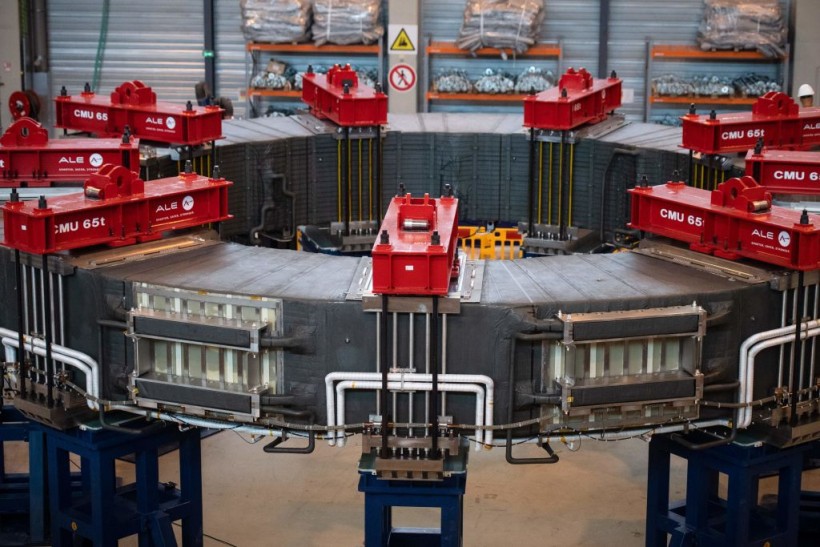EPFL Swiss Plasma Center (SPC) is among the leading researchers of plasma physics and plasma control developments. In a new study, the institute collaborated with DeepMind, a scientific group under the umbrella of Google.
Plasma and Nuclear Fusion for Generating Electricity

A picture shows the fully-assembled 10-metre-large poloidal field coil number 6 (PF6), assembled by China, in the winding facility for the construction of poloidal field coils which will be part of the magnetic system that will contribute to confine and model plasma during the launch of the assembly stage of nuclear fusion machine "Tokamak" of the International Thermonuclear Experimental Reactor (ITER) in Saint-Paul-les-Durance, southeastern France, on July 28, 2020. - Thirty-five nations are collaborating in the ITER energy project aimed at mastering energy production from hydrogen fusion, as in the heart of the sun, a potential new source of carbon-free and non-polluting energy.
The research developed a novel magnetic control approach that is specialized for plasma. The system works through a deep reinforcement learning system and was tested in the real world for the first time. The study of EPFL and DeepMind was mainly carried out in the Swiss Plasma Center's tokamak research facility or TCV.
Tokamaks are devices that resemble the shape of a donut. It is commonly utilized in nuclear fusion research. The SPC facility is among the few global institutes that own a tokamak in their in-house laboratory.
Tokamaks run through the use of a powerful magnetic field, keeping an intense plasma in place. The scale of plasmas that the device can confine commonly reaches a temperature of up to millions of degrees Celsius, exceeding the heat of the sun's core. The rates of plasma are required in order for a nuclear fusion to manifest between hydrogen atoms.
The main interest behind using tokamaks is to read the release of fusion energies for electricity generation studies.
ALSO READ: AI-Made Fake Faces Vs Real: Can You Distinguish Which One Is An Actual Human?
Swiss Plasma Center's Tokamak and DeepMind's Learning AI Algorithm Simulation
SPC's tokamak is unique due to its ability to configure plasma, earning itself a name of "variable-configuration tokamak" or TCV. The special feature of this tokamak serves as an advantage to investigate new approaches regarding plasma confinement and control, all with modification of the plasma's position and shape.
Tokamaks are able to maintain and form any rate of plasmas because of their adjustable magnetic coils. To prevent any unwanted deterioration of the vessel walls, a set of simulations are first conducted prior to the use of the TCV tokamak.
SPC expert and co-author of the study Federico Felici said that their simulator is constructed with data honed from a 20-year worth of studies and updates, reports PhysOrg. However, complex calculations are always being carried out to adjust the simulation according to the right value for each subject, adds Felici. This project is assisted by the team from DeepMind.
Deepmind's expertise on AI algorithms and simulation strategies are applied to the plasma configuration and trained to the SPC simulator. With the collected learnings of the system, a plan for the plasma configuration is produced. The method of the algorithm runs through different settings and analyses of configurations to expected results, and vice versa.
The Ai-based system's training fruition led the authors to acquire a variety of advanced configurations and other plasma shapes. After the simulation, the team tested the data on the tokamak in hopes to get real-world results.
SPC's collaboration with DeepMind began in 2018 through the mutual interest over tokamak magnetic control. According to Felici, DeepMind experts were immediately interested to utilize their AI algorithms in the field of nuclear fusion and in a real-world system such as the tokamak.
The study was published in the journal Nature, titled "Magnetic control of tokamak plasmas through deep reinforcement learning."
RELATED ARTICLE: Child Robot Nikola Can Convey Six Basic Emotions But Humanoid Lacks a Body
Check out more news and information on Artificial Intelligence in Science Times.














